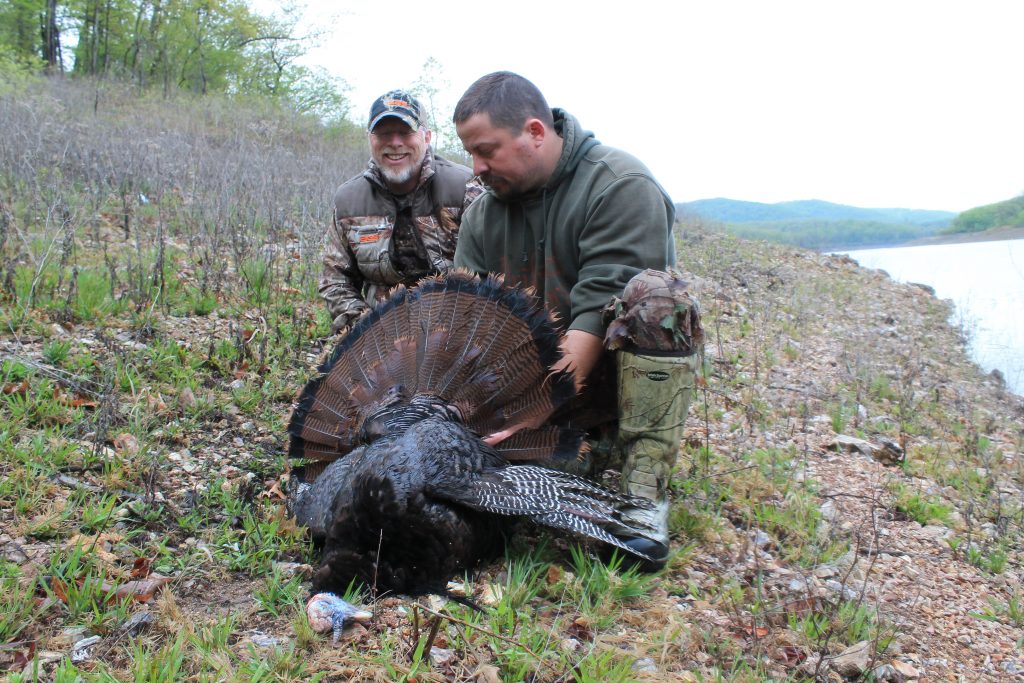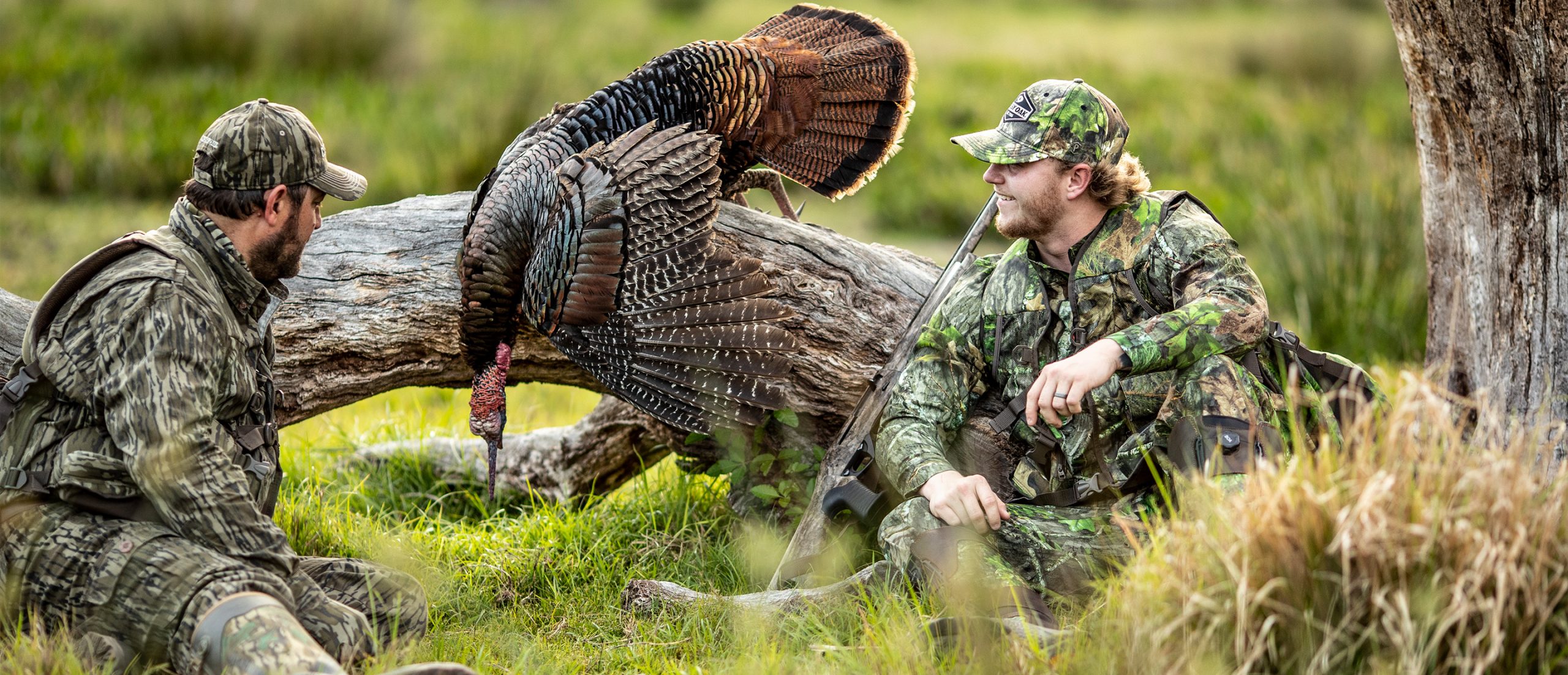Two-Man Turkeys
If you don’t partner with another hunter this spring, you might be missing out. Consider these reasons to chase thunder with a buddy.
Wild turkeys are resilient animals. For critters with such small brains and the inability to reason, they find a way to outsmart — or at least outlast — hunters quite often. That leads to serious frustrations among hunters, especially when you’re hunting alone and coming up short. Sure, hunting a turkey one-on-one is fun and rewarding, but turkey hunting is often more enjoyable when shared with others. And in many cases, it’s easier to shoot a turkey with two people working together. There are many reasons why. Here are seven.
1. For Covering 360 Degrees
Rarely do turkeys come straight to calling. They often circle around and appear from the left, right or rear. Therefore, two shooters who shoot from the same shoulder (both need to be right- or left-handed shooters) can cover almost all directions. You can sit back to back or looking in opposite directions. Each hunter covers their front and strong side, which is the same direction for each but opposite directions because they’re facing directly away from each other. Regardless of which direction the turkey appears, odds of a shot opportunity nearly double. This tactic is especially good for tagging silent birds.
2. For Covering More Ground
Sometimes, sitting back to back isn’t the best tactic. Instead, maybe a bird routinely frequents two locations, and splitting up increases your odds. Perhaps rolling terrain prevents you from covering an entire food plot a bird uses as a strut zone, so sitting at two areas of the plot boosts the odds. But remember, if you’re splitting up, never shoot toward the other hunter’s position, and don’t change locations. Know where each hunter is sitting, and stay in place. Have safe shooting zones, and set a designated time or signal for when the hunt is finished and no shooting is allowed. Then get up to meet each other.
3. For Sounding Like Multiple Turkeys
Hunters can use many calling tactics, including sounding like multiple turkeys. Although you can do this on your own — as when running a diaphragm and friction call — it’s easier and more realistic when two hunters interact with each other’s turkey vocalizations. It’s all about painting a picture with calling as two (fake) birds set the scene for a distant gobbler that has yet to commit. I like to fire up stubborn toms with two boss hens giving each other a little what-for.
4. For Those Caught Napping
Turkey hunting isn’t always full of action. In fact, most of the time, it’s long periods of inaction. Sometimes, hunters fall asleep. More often, hunters get caught off-guard and are unprepared with their gun down. With two hunters, one hunter might be ready if the other is not.
5. For Carrying More Gear
Taking a bunch of turkey gear afield is burdensome. Blinds, vests, guns, calls, decoys and other frequently used items create quite a load. A second person helps lighten it and makes the hunt a bit easier.
6. For Taking Multiple Birds
Hunters commonly look forward to doubling up with a hunting buddy. But that isn’t possible if a hunting partner isn’t present. Having that second guy or gal there for a hunt makes that double possible, especially if two gobblers walk into range together. That’s the ultimate experience for two turkey hunters.
7. For the Pendulum Play
Perhaps the most important tactics for filling tags is what I call the pendulum play. Often, longbeards hang up and refuse to come closer to a caller’s position. After all, nature designed it so hens generally go to gobbling toms, not vice versa. Therefore, by attempting to call in turkeys, we’re trying to reverse the general trend of nature. That isn’t easy.

The pendulum play works well to achieve this. This is when the shooter remains where the hunters have been calling. The second hunter — now the caller — retreats 50 to 75 yards out of sight and resumes calling. Hopefully, the gobbler thinks the hen is leaving and gets closer to the shooter. At worst, perhaps the bird works slightly closer.
To accomplish this, the caller should keep tabs on the hunter’s stationary and the gobbler’s fluid locations (marking these locations on an app helps with tracking accurate orientation) and slowly keep retreating as he hears the gobbler getting closer. If the turkey swings to the right, the caller swings left, and vice versa. Often, with each directional change, the turkey might get closer, eventually standing in range.
Bonus: For Having More Fun
All things considered, and for all its tactical advantages, hunting with a partner is just more fun. And although that’s a bonus, it’s the most important reason. Chasing thundering longbeards with a trusted family member or friend is a great experience all hunters should enjoy. Get out there this season and make it happen.
